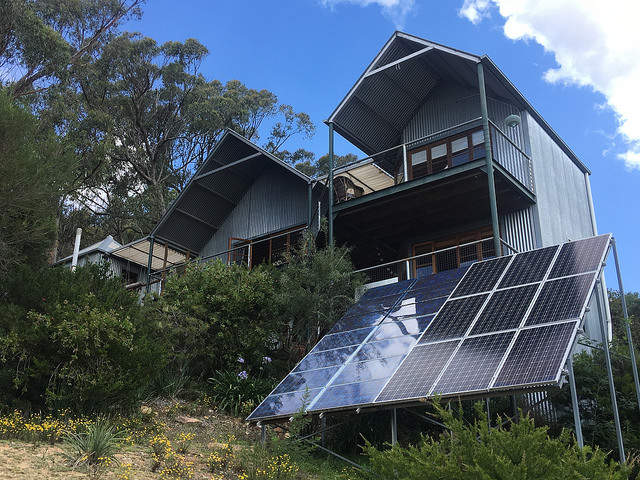
The global shift to renewable energy sources has had an inevitable effect on the way people address the production and storage of electricity. Existing power infrastructure has already proven itself unsustainable if rising energy needs are to be met without jeopardising already unstable climate targets, calling attention to the need to adopt new grid systems. A promising alternative is that of decentralised energy systems, reliant on electricity produced off-grid and close to consumer sites rather than at large, remote locations.
The benefits of going off-grid
Such a system, made up of small, localised grids, offers the possibility of lowering carbon emissions and reducing transmission losses, as well as enabling a more secure supply as a single system would no longer be responsible for a large number of customers. It also holds potential benefits from an economic perspective, as in the long term it could offer more competitive prices than traditional energy suppliers, with decentralised tariffs creating more stable costs.
Additionally, local grids would place more control in the hands of the consumers themselves, allowing communities to take a more active role in how their energy is produced. Indeed, new designs and technologies which allow smaller buildings and individual homes to harness solar and wind energy have called into question the necessity for consumers to outsource their power needs.
The move away from centralised power stations “is being driven by increased digitisation, decarbonisation and the desire for greater resilience and customer control”, says Distributed Energy sales director Ian Hopkins. He adds that the benefits extend beyond simply satisfying customers, offering large energy users the chance to “turn their energy assets into an additional revenue stream” by selling excess capacity to the grid.
The likelihood of adopting decentralised power
With the benefits evident, Hopkins predicts that the trend towards a ‘fully decentralised energy landscape’ will inevitably grow, a belief shared by many in the power industry.
For instance, a spokesperson from isoenergy stated that they “see little other option for a sustainable UK” other than a decentralised approach to energy generation, pointing to advances in “smart meters, energy storage, the government’s aim to electrify heating, and the automotive sector’s requirement for a roll out of car chargers in the UK” as motivating factors for implementing such a system.
Demand for new methods of energy storage is also driven by the UK’s grid reaching capacity in solar, hydro and wind projects, with local-level solutions needed to meet people’s growing energy usage. According to Carbon Trust, cities such as Manchester predict consumer’s electricity needs will exceed current capacity in the coming years. Therefore, adopting a decentralised energy system could offer a viable and efficient solution to this anticipated growth.
Regardless of how it is achieved, changing the existing energy system and infrastructure is perceived increasingly as an unavoidable necessity, fuelled by the boom in renewable power. A Yorkshire Energy spokesperson said changes could be seen in battery capability and capacity, or in the use of power stations, which they said will probably “start to manage peak-time rather than base-load, effectively becoming energy storage peaking plants”.
We need to “reimagine and build an energy system that works for the future, not the past,” says LO3 Energy governance lead for the Exergy platform, Molly Webb, who deems centralised systems insufficient for the changing industry.
“Combining the promise of solar and wind power with decentralisation of markets, or transactive energy, gives us much more opportunity for meeting the needs of billions of us living on a rapidly changing planet,” she adds.
Implementing a change of power
Decentralised power systems already exist in certain areas of Japan, with the country announcing the launch of its first urban microgrid system in September last year, intended to connect 117 homes in the Smart City Shioashiya Solar-Shima. Similarly, smaller eco-communities in Samsø, Denmark and Feldheim, Germany have managed to separate their energy needs from major power grids, also turning to microgrids for a more independent and sustainable system.
But these grids are still relatively new, and the viability of implementing such a system on a large scale is currently unclear, though optimism over the opportunities offered by such a move remains strong in the industry.
Intelligent technology is the key to implementing decentralised energy on a large scale, says Origami Energy head of marketing and propositions, Dominic Fava, as it offers a flexibility which is absent from renewables, given the difficulty in truly controlling these power sources. He adds that only smart technology can enable their harnessing, to manage the assets in real-time.
An efficient smart energy infrastructure will be key to lessening consumer’s reliance on larger scale power plants. “To succeed, decentralised energy systems must be structured correctly” says law firm DWF’s partner in energy and renewables Christian Hellmund.
“Right now, a certain level of baseload is required from larger scale power plants which provide continuous generation. But an increase in smart infrastructure, along with new generation plants and storage technologies, may displace these larger plants in the future” he adds.
Fava predicts that smart energy systems could save UK energy customers £8bn per year, using existing technology to “dramatically reduce the amount of new infrastructure we need” through the digital management of supply and demand at local and national levels, creating “energy systems fit for the future”.



